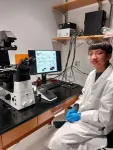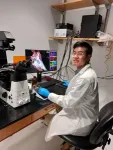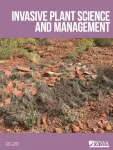(Press-News.org)
Every year, plant diseases caused by bacteria, viruses, and fungi contribute to major economic losses. The prompt detection of these diseases is necessary to curb their spread and mitigate agricultural damage, but represents a major challenge, especially in areas of high-scale production. Smart agriculture systems use camera surveillance equipped with artificial intelligence (AI) models to detect features of plant diseases, which often manifest as changes in leaf morphology and appearance.
However, conventional methods of image classification and pattern recognition extract features indicative of diseased plants from a training set. As a result, they have low interpretability, which means it is challenging to describe what features were learned. Further, obtaining large datasets for model training is tedious. Handcrafted features, which are selected based on expert-designed feature detectors, descriptors, and vocabulary, offer a feasible solution to this problem. However, these often result in the adoption of irrelevant features, which reduce algorithm performance.
Fortunately, a solution is now on the horizon. A team of data scientists and plant phenomics experts from China and Singapore have developed a swarm intelligence algorithm for feature selection (SSAFS) that allows efficient image-based plant disease detection. They reported the development and validation of this algorithm in their recent study published in Plant Phenomics. Explaining the benefits of introducing SSAFS, the corresponding author of this study, Prof. Zhiwei Ji, comments, “SSAFS not only significantly reduces the count of features, but also significantly improves the classification accuracy.”
The study used a combination of two principles: high-throughput phenomics, through which plant traits like disease severity can be analyzed on a large scale, and computer vision, in which image features representative of a specific condition are extracted. Using SSAFS and a set of plant images, the researchers identified an “optimal feature subset” of plant diseases. This subset encompassed a list of only the high-priority features that could successfully classify a plant as diseased or healthy, and further estimate the severity of disease. The effectiveness of SSAFS was tested in four UCI datasets and six plant phenomics datasets. These datasets were also used to compare the performance of SSAFS to that of five other similar swarm intelligence algorithms.
The findings demonstrate that SSAFS performs well in both plant disease detection and severity estimation. Indeed, it outperformed the existing state-of-the-art algorithms in identifying the most valuable handcrafted image features. Interestingly, the majority of these disease-related features were local—i.e., they involved distinct patterns or structures, such as points, edges, and patches, which are often observed in diseased plants. Overall, this algorithm is a valuable tool for obtaining an optimal combination of handcrafted image features indicative of plant diseases. Its adoption could significantly improve plant disease recognition accuracy and reduce the required processing duration.
When asked about the future implications of their study, Prof. Ji comments, “One of the crucial contributions of this work to plant phenomics is the definition of handcrafted features and the precision screen of relevant features through a novel computational approach. He adds by saying, “We propose to combine comprehensive handcrafted and non-handcrafted features of plant images for accurate and efficient detection in the field of phenomics.”
###
Reference
Authors
Xiaojun Xie1,2, Fei Xia1, Yufeng Wu3, Shouyang Liu4, Ke Yan5, Huanliang Xu1, Shouyang Liu6, Zhiwei Ji1,2
Affiliations
1College of Artificial Intelligence, Nanjing Agricultural University, Nanjing, Jiangsu 210095, China
2Center for Data Science and Intelligent Computing, Nanjing Agricultural University, Nanjing, Jiangsu 210095, China
3State Key Laboratory for Crop Genetics and Germplasm Enhancement, Bioinformatics Center, Academy for Advanced Interdisciplinary Studies, Nanjing Agricultural University, Nanjing, Jiangsu 210095, China
4Academy For Advanced Interdisciplinary Studies, Nanjing Agricultural University, Nanjing, China
5Department of the Built Environment, College of Design and Engineering, National University of Singapore, 4 Architecture Drive, Singapore 117566
6Academy For Advanced Interdisciplinary Studies, Nanjing Agricultural University, Nanjing, Jiangsu 210095, China
About Professor Zhiwei Ji
Zhiwei Ji is a Professor at the College of Artificial Intelligence, Nanjing Agricultural University, China, and also serves as the Director of the Center for Data Science and Intelligent Computing at the University. He is an expert in the fields of systems biology, bioinformatics, pattern recognition, big data analysis, and artificial intelligence and has been an active researcher in these areas for more than 10 years.
END
The rigidity, transparency and hardness of PET (Polyethylene Terephthalate) make it one of the most valuable plastics for the manufacture of plastic bottles, packaging and other single-use products. However, these characteristics make it highly persistent in the environment, to the point that a plastic PET bottle may take several hundred years to degrade in the ocean.
At the molecular level, PET, and all plastics, have a polymeric structure made up of tens of thousands of repetitions of small subunits called monomers. In the last decades, the degradation ...
WESTMINSTER, Colorado – 9 May, 2023 – Buffelgrass is a highly invasive perennial found in arid regions around the globe. It is known to reduce the biodiversity of native ecosystems and to increase the frequency and intensity of wildfires.
A team of researchers recently took a close look at efforts to control buffelgrass in Arizona’s Saguaro National Park, located in the Sonoran Desert. An article featured in volume 16, issue 1 of the journal Invasive Plant Science and Management describes what that investigation can tell us about effective control strategies. ...
The difficult-to-treat brain cancer glioblastoma steals a person’s mental faculties as it spreads, yet the tumor’s insidious ability to infiltrate neighboring networks in the brain could also prove its undoing.
Scientists at UC San Francisco have discovered that neural activity in these deadly tumors can restructure connections in surrounding brain tissue, causing the cognitive decline associated with the disease, and that the drug gabapentin, commonly used to prevent seizures, could block this growth-causing ...
(Santa Barbara, Calif.) — Gene editing is a powerful method for both research and therapy. Since the advent of the Nobel Prize-winning CRISPR/Cas9 technology, a quick and accurate tool for genome editing discovered in 2012, scientists have been working to explore its capabilities and boost its performance.
Researchers in UC Santa Barbara biologist Chris Richardson’s lab have added to that growing toolbox, with a method that increases the efficiency of CRISPR/Cas9 editing without the use of viral material to deliver the genetic template used to edit the target genetic sequence. According to their new paper ...
**Note: the release below is a special early release from the European Congress on Obesity (ECO, Dublin, 17-20 May). Please credit the conference if you use this story**
New research to be presented at next week’s European Congress on Obesity (ECO) in Dublin, Ireland (17-20 May), has found that tweets about obesity are predominantly negative.
The analysis, by researchers in Switzerland and the UK, also found that Twitter activity spiked around the time of significant political events.
These included comments about Donald Trump’s weight when he was US president and ...
Cutting-edge cancer treatments like immunotherapy are offering new hope for patients, often in combination with more common approaches such as chemotherapy. But determining the best treatment combination isn't always straightforward. Many patients spend valuable time on expensive therapies with serious side effects that aren’t effective against their cancer.
Now, a new discovery is poised to help. Researchers from USC Norris Comprehensive Cancer Center have identified a biomarker that indicates which patients with non-small cell lung cancer (NSCLC) will respond well to chemoimmunotherapy. The biomarker, ...
CHAPEL HILL, NC -- Researchers at the UNC Gillings School of Global Public Health and UNC Lineberger Comprehensive Cancer Center found mailing human papillomavirus (HPV) self-collection tests and offering assistance to book in-clinic screening appointments to under-screened, low-income women improved cervical cancer screening nearly two-fold compared to scheduling assistance alone. Scheduling assistance primarily consisted of helping to book an appointment for in-person screening at a clinic, regardless of whether an at-home test was offered or returned, or whether the HPV test was negative or positive.
The findings from the randomized ...
Peer-reviewed / Randomised Controlled Trial / People
Clinical trial with 665 under-screened women in North Carolina (USA) investigated use of high-risk human papillomavirus (hrHPV) self-collection kits to increase cervical cancer screening uptake.
Screening uptake among participants sent self-collection kits and given support to attend an in-person appointment was almost double (72%) the cervical cancer screening uptake in those only given appointment support alone (37%).
More than three quarters (78%) of these underserved participants ...
At a recent event to celebrate the Association’s 85th Anniversary, the Association of British Paediatric Nurses awarded Honorary Fellowships to eight children’s nurses in recognition of their outstanding contribution to the nursing care of children and young people.
The 2023 Honorary Fellows
Ann Bisbrown Lee for services to children’s nursing and for many years’ service to the Association of British Paediatric Nurses, especially in leading marketing and conference activities.
Professor Steven Campbell for services to children’s nurse education and to the Association ...
Interventions aimed at reducing work-related stress for individual healthcare workers may lead to improvements in how people cope with stress up to a year later. Findings from a Cochrane review of the latest available evidence build on the conclusions of a previous review in 2015 that found low-quality evidence that interventions, such as cognitive behavioural training (CBT), mental and physical relaxation, were better than none.
The researchers included 117 studies of the effects of different interventions on stress alleviation in the current review, of which 89 studies were new. These 89 studies were published between 2013 and ...






